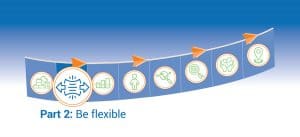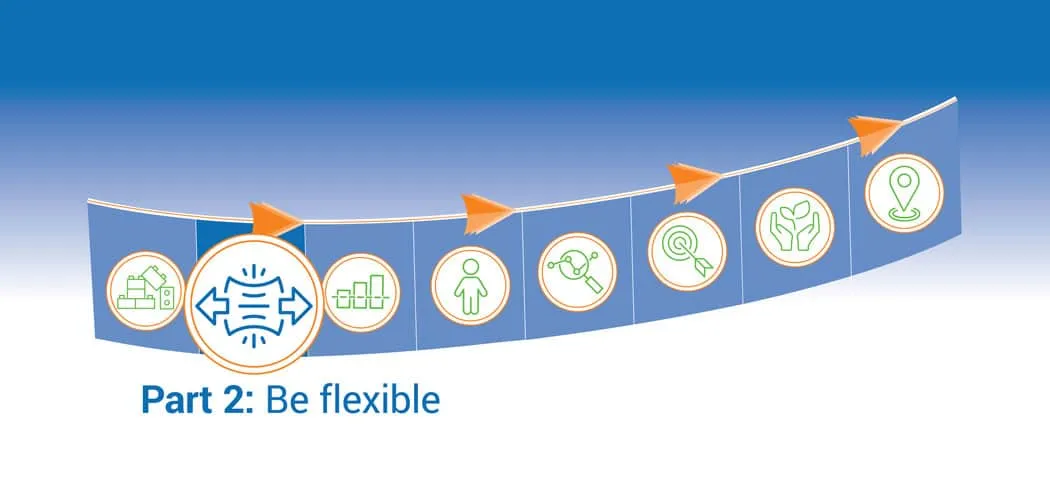June 19, 2020

This is the second in a series of blogs outlining an assessment plan for back-to-school 2020 after the coronavirus pandemic has forced schools to close their buildings and administer teaching remotely instead. The next blogs in this series will be released weekly and you’ll be able to view them all here.
“Flexibility is nothing new for educators. It’s a way of life.”
In our current environment, conversations about ‘being flexible’ feel very different. As we look ahead to autumn, we see a lot of unknowns — but we can be sure that the new school year will look very different from the ‘back to schools’ we’ve experienced in the past.
Who had any idea how much change 2019-2020 would bring, and how quickly? In a matter of weeks, the academic year was transformed from something fairly typical into something we’ve never seen before. As schools suddenly closed, we all had to become very flexible very quickly — and with that flexibility, we became increasingly responsive.
To be sure, back-to-school (BTS) 2020 won’t involve ‘business as usual.’ Reopening schools fully will require flexibility in day-to-day operations, and responsiveness to student and teacher needs in a still-evolving learning environment. But with the right planning, we can establish reasonable expectations for accelerating student learning — which, in turn, will reassure both families and the community.
Planning for the unknown
With flexibility and responsiveness in mind, school and trust leaders across the country are planning for multiple scenarios. In fact, many have a Plan A, a Plan B, and even a Plan C. For example, in this recent blog from Tes, one school suggested they’ll ‘essentially be operating five separate schools on any given day.’ Another school planning to aim ‘for there to be an average of 60 students spread across the site during one period and 240 students on site during the school day’. All three schools in this article blog intend to utilise a level of blended learning between in-school and remote. Just as a hybrid car switches between equally powerful fuel sources based on driving conditions, so instruction, assessment, and engagement would be equally powered by face-to-face and distance learning, as the content demands.
A responsive plan for BTS 2020 must also consider that the upcoming academic year — while challenging — will not necessarily be characterised by learning loss and educational despair, as some commentators have suggested. We were recently told by a headteacher:
“My long-term hope is that by the time we get to September – if we’ve done our job right – we’ll have ensured that a good level of reading engagement has been achieved and sustained, as this is the kind of core activity that enables accesses to the rest of the curriculum.”
– Richard Slade, headteacher at Plumcroft Primary School
Answering critical questions
New practices and procedures will clearly be necessary for BTS 2020. Educational technology companies, like school and trust leaders, must also focus on flexibility and responsiveness. As BESA’s research shows, there has never been a time when educators and learners relied so heavily on technology. And at Renaissance, we’re responding. But how?
The one absolute in all of this is the need — now more than ever — to quickly and efficiently ascertain where students are in terms of learning and achievement. While we can anticipate an appreciable amount of ‘learning loss’ and larger gaps in performance due to recent school closures, we know what we need: definitive answers about where students are and how we can move them forward in their learning.
While formal assessments like GCSEs have been cancelled this year, and the use of interim assessment dropped drastically this spring, when we face the challenges of BTS 2020, we will be anxious for and will desperately need the information that interim assessments provide.
The first step is familiar: screen all students. At the beginning of 2019, we called this ‘what we do at the beginning of every school year.’ For BTS 2020, we now know to label this screen-students-at-school protocol ‘Plan A.’ BTS 2020 also requires a ‘Plan B’— an option to administer Star Assessments remotely in order to understand where students are and where they need to grow.
In other words, you need a definitive starting point from which to design a reasonable plan to accelerate learning. We understand this, and we’re here to help.
Administering Star Assessments remotely
Beginning in March 2020, Renaissance initiated support for school and trust leaders in the remote administration of Star. This support included guidelines and best practices to establish test fidelity, and resources for administrators and staff. In addition, we provided schools with resources to share with families to ensure they understand why and how we are assessing their children — and guidelines for those who may be proctoring the remote test administration.
We are updating these resources to ensure they remain relevant for summer and BTS 2020.
Staying strong in uncertain times
Flexibility requires great strength, but — as we noted in our previous blog — you already have tools and resources to accomplish this. Be flexible in planning, yet strong in purpose: To ascertain as quickly and efficiently as possible where your students are and how best to move them forward.
In physical endeavours, the greater your strength, the more you can relax your muscles while still maintaining force. This builds even greater flexibility, especially when working among extreme ranges of motion. Even though “relaxing” seems out of the question for BTS 2020, “maintaining force” is very much on point.
BTS 2020 holds the potential for extreme ranges in learning gains or losses, in day-to-day schedules, in equitable access to distance-learning tools, and to ongoing professional learning. In each case, we must remain flexible to the point that we can relax while still maintaining the force required to address each of these issues.
To support greater strength and flexibility, we’ll close with a list of six points to ponder as you plan for BTS 2020.
- We’ll need to navigate a new normal: blended learning. What challenges does this model present? Training teachers, staggering schedules, and designing instruction are just a few. The first step is to envision multiple blended scenarios when developing your plans. The key to providing education in the new normal is reliable internet connectivity: equity and access are non-negotiable and must be part of every plan. What resources are available to your school or trust to support expansion and accountability for blended learning? Have you been able to utilise the EEF’s resources to support schools with students at home learning?
- We’ll need to rethink the ‘typical’ school day. Supporting use of social distancing, potentially encouraging face masks and developing health protocols will be coordinated with government health officials as part of a unified public-health strategy. Social distancing is a complex challenge. Blended learning can be utilised, but the entire community will be involved in daily life changes. Solicit input from all groups for support. School-organised transportation, meal provision and delivery, and extracurricular activities will likely need to be restructured.
- We’ll need to group students in new and different ways. As you assess students upon return, think of innovative ways to group them. Perhaps low-scoring year fours could be grouped with high-performing year threes. How would this play out in secondary schools? This could be your initial step to further implement Star Assessments into the school and utilising Renaissance’s curriculum-linked learning progressions. If you currently manage pupils manually on the Renaissance site, it may be worth considering Renaissance data integration to help match the system with a potentially frequently-changing SIMS.
- We’ll need to be ready for curriculum challenges throughout the school year. Meeting students where they are requires intervention and enrichment activities, but this is what you do every day, in every school year. Renaissance provides Focus Skills™ to help you narrow instruction by year level and domain, so students acquire foundational knowledge to move forward. Request teacher input on cross-curricular instruction. Is it possible to blend maths with science? History with English? We offer ideas for cross-curricular connections in our webinar which can be found here.
- We’ll need to prepare for periodic school closures. One of your scenarios should address seamless transfer of instruction from classroom to online learning. Depending on the length of these closures, consider remote administration of Star Assessments, with uninterrupted progress monitoring.
- We’ll need — more than ever — to inspire confidence in our learners. Regardless of whether school buildings reopen, begin the new school year by checking each student’s ‘vital signs.’ Offer reassurance and confidence that educators are ready to support each pupil as you assess what each one needs for academic success — and for social and emotional well-being.
In the next blog in this series, we’ll continue the discussion by addressing the next key step: getting each student’s baseline for BTS 2020. Once you’ve established your starting point and identified students’ instructional needs, you can move more quickly into planning high-impact daily instruction.
The next instalment of this blog will be published on 26th June 2020, and you’ll be able to view it here. Follow us on social media to stay up to date and share your thoughts with us.
